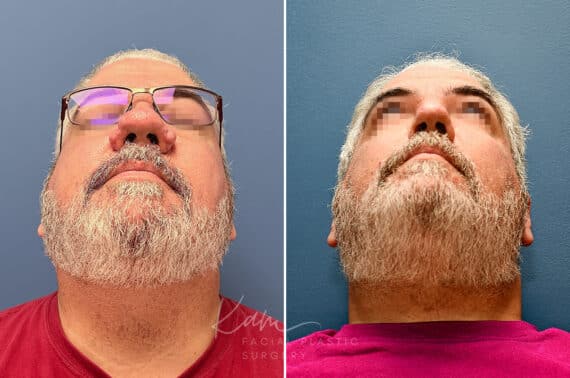Rhinophyma, which first presents as an innocent, small flush on your nose, can lead to permanent disfigurement if left untreated. What starts as a minor skin change can gradually progress into a more severe condition, making early treatment essential.
Recognizing rhinophyma early is key to getting the right treatment. Understanding its symptoms, causes, and available treatments can make a big difference. Let’s take a closer look at what rhinophyma is, how it’s linked to rosacea, and how dermatologists help manage it.
Book a consultation with Dr. Kam to prevent rhinophyma from worsening and explore early treatment options.
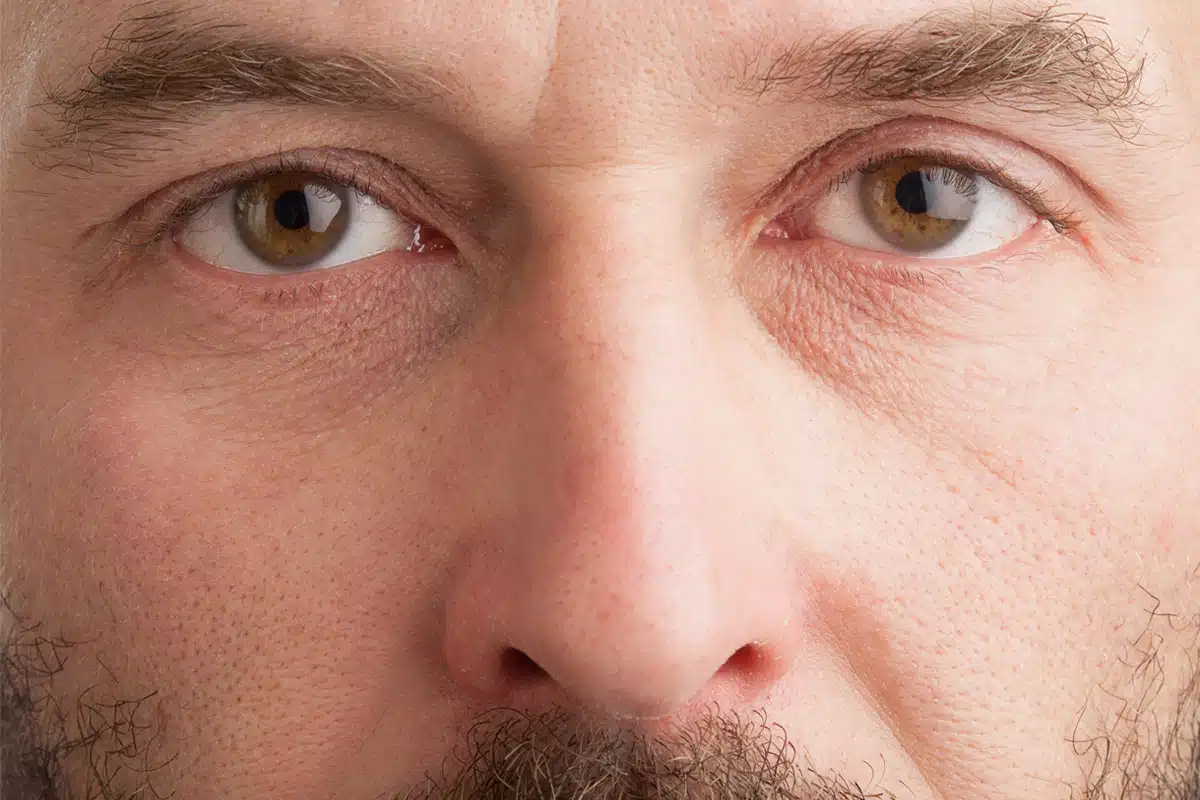
Identify and Treat Rhinophyma
- Rhinophyma, an advanced stage of rosacea, leads to thickened, bulbous skin on the nose, primarily affecting males over 40.
- Early signs include persistent erythema, nasal softness, and progressive thickening of the nasal skin, which can be managed with prompt treatment.
- Initial treatments involve oral antibiotics, topical medications, and chemical peels to reduce sebaceous gland activity and prevent progression.
- Advanced rhinophyma treatments include CO2 laser therapy and surgical correction to remove excess tissue and restore a natural appearance.
- Post-surgery care involves pain management, wound cleaning, and adherence to medical advice to ensure optimal healing and reduce complications.
RHINOPHYMA OVERVIEW
Rhinophyma, an inflammatory skin disease, is the most extreme manifestation of rosacea symptoms, hallmarking the terminal stage of this chronic disease. The disease can lead to the distortion of the nose accompanied by a rugged and fair skin appearance due to hypertrophy of sebaceous glands and expansion of connective tissue.
Demographics and Triggers
The condition primarily affects males, most commonly those over 40 who have an English, Eastern European, or Scandinavian racial background. Specialists assert that while rosacea is the backdrop, triggers such as sun exposure can exacerbate rhinophyma progression. It was believed that this condition is linked to alcohol consumption, which is why it is also known as “alcoholic nose”, however, they are not associated.
Treatment Options
People with rhinophyma have treatment options that are particularly related to rosacea. Understanding the disease process allows for more specific treatment options for people suffering from phymatous rosacea and, as a result, rhinophyma. Thus, treating rhinophyma without taking rosacea into account may fail to address the underlying problem.
rhinophyma patient results
* All patients are unique and individual results may vary.
THE CONNECTION BETWEEN RHINOPHYMA AND ROSACEA
Rhinophyma and rosacea share a close relationship. Rhinophyma is, in fact, a phymatous subtype of rosacea, a common inflammatory disease. Rosacea usually presents as persistent facial redness located in the central area. A more severe manifestation of the disease can result in phymatous rosacea which is characterized by thickened, bulbous skin, especially on and around the nose – a condition known as rhinophyma.
Further complicating the effect of rosacea, ocular rosacea can occur alongside skin symptoms inducing ocular discomfort. This close association of rhinophyma with more general rosacea conditions reveals this issue as a severe symptom of the broader rosacea disease process. It is therefore crucial to approach the treatment of rosacea comprehensively.
People with rhinophyma have treatment options that are particularly related to rosacea. Understanding the disease process allows for more specific treatment options for people suffering from phymatous rosacea and, as a result, rhinophyma. Thus, treating rhinophyma without taking rosacea into account may fail to address the underlying problem.
EARLY SIGNS OF RHINOPHYMA
Rhinophyma often starts with subtle changes that can be easy to miss.

Rosy hue:
Persistent redness (erythema) on the nose is one of the first signs. This may be accompanied by dilated blood vessels (telangiectasia).
Nasal softness:
The nose may feel softer than usual before the skin starts to thicken. This happens due to sebaceous gland hyperplasia and fibroblast proliferation, leading to nasal tissue overgrowth.
Secondary nasal airway obstruction:
As the skin thickens, it can cause a bulbous, red nose and, in some cases, obstruct nasal airflow. While rare, these symptoms can also indicate an occult malignancy, making early detection crucial.
Symptoms of rhinophyma can vary from person to person, making a detailed evaluation essential for an accurate diagnosis. Identifying and treating it early can contain the progression of rhinophyma and improve patient health-related quality of life.
Progress to Advanced Stages of Rhinophyma
Rhinophyma is often mistaken for a severe form of rosacea, but it is actually a separate condition that develops from long-term, untreated rosacea. While both are closely linked, rhinophyma is a more advanced and severe stage of the disease.
How Rhinophyma Progresses
If rosacea is left untreated or poorly managed, the condition can gradually worsen. What starts as mild redness and small bumps on the nose can turn into significant swelling and thickened skin. Over time, enlarged pores, excessive oil production, and tissue overgrowth cause the nose to become bulbous and misshapen, signaling the advanced stage of rhinophyma.
Why Early Treatment Matters
At this stage, rhinophyma is more than just a cosmetic issue—it can lead to increased sensitivity, redness, and even breathing difficulties if the nasal passages become obstructed. Recognizing the early signs and seeking treatment as soon as possible can help slow or even prevent progression.
Understanding how rosacea leads to rhinophyma provides valuable insights into managing and mitigating its effects before they become severe.
how to TREAT RHINOPHYMA
New Jersey rhinophyma treatment is primarily tailored to the severity of the condition. Early stages can often be managed with therapies such as topical and oral antibiotics. Nevertheless, as the condition progresses, more invasive treatment methods may be needed.
Electrosurgery, dermabrasion, CO2 laser resurfacing, and cryosurgery are some options for more advanced rhinophyma. These procedures aim to decrease the size of the nose and restore a more normal appearance.
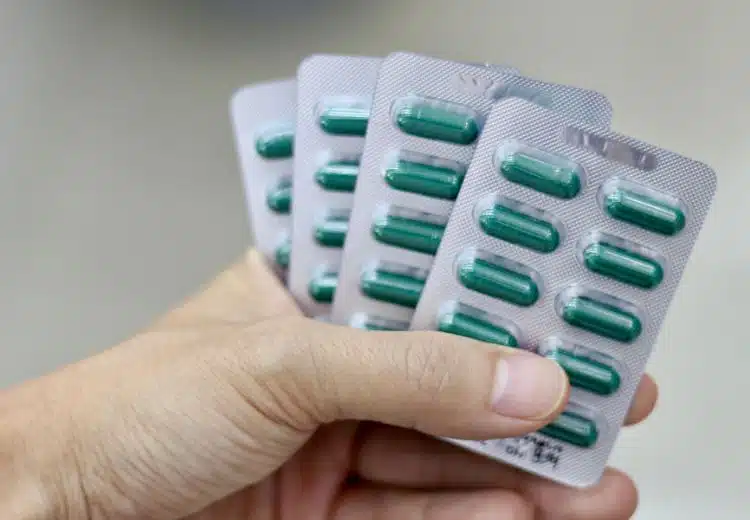
Therapeutic Options for Early Stage
Rhinophyma in its early stages can be treated effectively by various therapeutic options. Oral antibiotics and topical medication are widely used methods for this skin disorder, with oral doxycycline being a commonly prescribed choice. Experts report that this treatment has shown significant effectiveness in many patients.
Another option to manage early-stage rhinophyma includes chemical peels. Highly regarded for their effectiveness in dermatology, chemical peels peel away the affected skin to encourage new skin generation. This treatment works by reducing the size of the oil glands, thus minimizing the manifestation of rhinophyma.
CO2 Laser Therapy for Rhinophyma
CO2 laser treatment is one of the most effective options for treating rhinophyma, offering precision and minimal scarring. This advanced procedure, available in New Jersey, uses controlled thermal energy to remove diseased tissue while preserving surrounding healthy skin. However, the choice of treatment depends on the severity of tissue overgrowth and the patient’s overall health.
Laser resurfacing is another beneficial technique that smooths the skin and helps reduce post-operative scarring. CO2 laser excision has shown excellent results with minimal complications, making it a preferred option.The use of dye lasers, although not as common, has shown the potential ability to address hypertrophic vascular components.
Compared to traditional methods, CO2 laser therapy provides significant advantages. Its precision reduces the risk of excessive bleeding and surrounding tissue damage, leading to better outcomes.
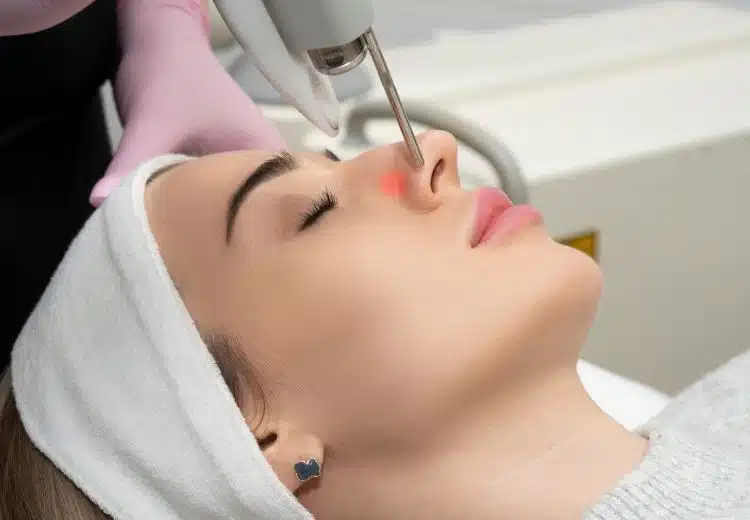
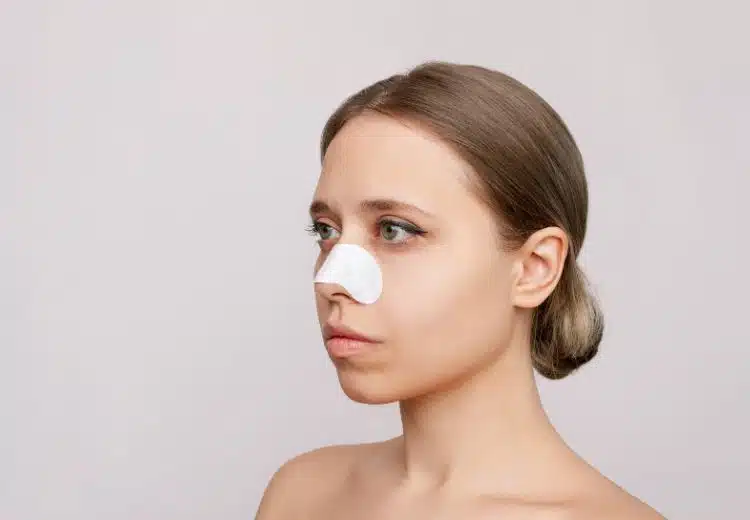
Surgical Treatment and Techniques for Rhinophyma
With surgery, the excess tissue is carefully removed, followed by strategic wound closure. One of the surgical techniques ensures a significant reduction in the appearance of rhinophyma deformities.
Another technique applied is surgical correction. This technique involves reshaping the nose to improve its overall appearance. Surgical correction requires a careful balancing act between removing the excessive tissue and preserving the healthy tissue.
Surgical treatments for rhinophyma in New Jersey might seem overwhelming, but they can deliver life-changing results. Choosing a skilled and experienced surgeon is important, as proper technique leads to the best outcomes. It’s no surprise that surgery is a popular option since it improves both appearance and confidence.
Combination of Procedures
The combination of surgical and drug-based treatments for rhinophyma can be incredibly beneficial. A laser and scalpel excision combined can reduce the skin condition significantly as it minimizes scarring while also providing effective results. The emotional distress caused by rhinophyma can also be alleviated through the use of these treatments, which can restore normal appearance and function.
Dr. Joana Kam has extensive experience in treating rhinophyma and can help improve physical appearance through a combination of different treatments.
POST-SURGERY CARE AND EXPECTATIONS FOR RHINOPHYMA PATIENTS
After undergoing surgery to treat rhinophyma, patients have key responsibilities in their post-surgery care to achieve optimal healing. Attention must be directed to keeping the tissues healthy. The healing process commonly includes pain management, wound cleaning, and applying prescribed ointments.
Patients with rhinophyma must be aware of potential complications like infection or soft tissue damage. Adherence to all care instructions provided by the healthcare team is crucial to a successful recovery.
RHINOPHYMA MANAGEMENT WITH A SPECIALIST
If you or someone you know is suffering from rhinophyma, Dr. Kam can provide effective treatments. Specializing in medical aesthetics, Dr. Kam is committed to providing comprehensive care and personalized treatment plans for each patient. With their expertise in surgical techniques, she is dedicated to helping patients reduce the signs of this condition and restore their confidence. Contact Kam Facial Plastic Surgery today to schedule an initial consultation and start your journey to healthier skin with rhinophyma treatment!


